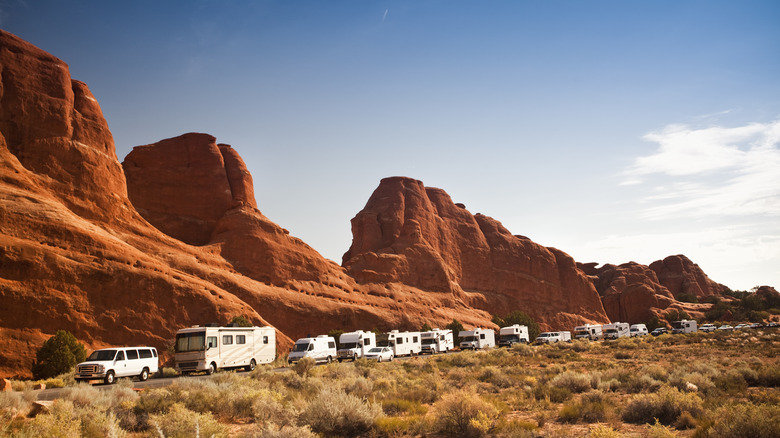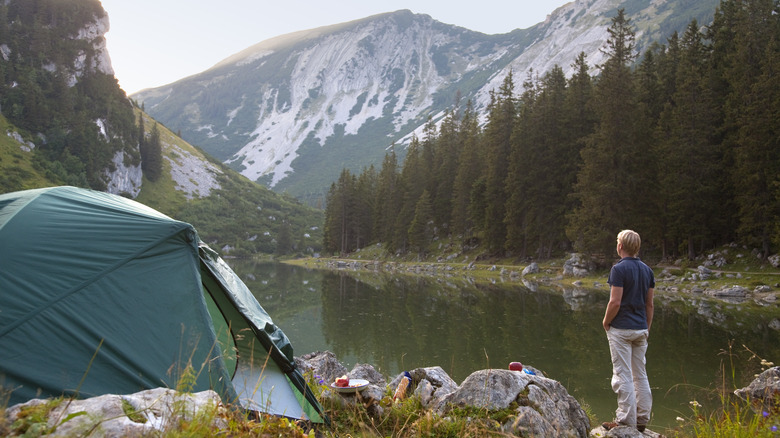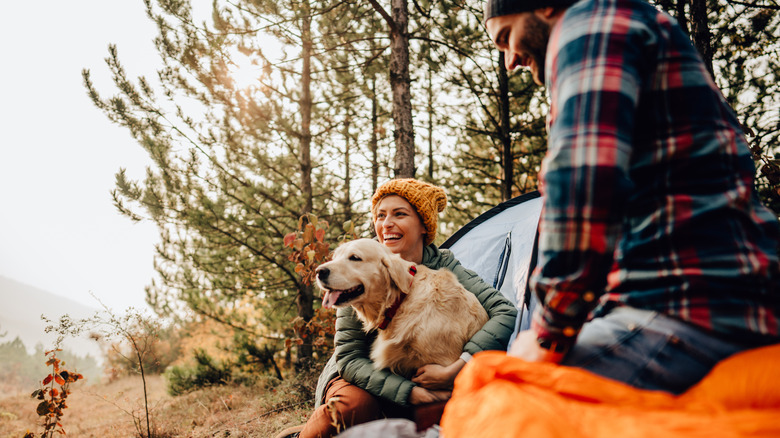Travel Guides Outdoor Adventures Camping
Joshua St. James
When you think of camping, memories of summer days, warm nights by the fire, and swimming in a lake may come to mind. Summer often steals the spotlight, as it is the most popular camping season for many individuals. Plenty of highlights come with a summer camping trip, but fall brings charm and unique experiences, making it a perfect time for a relaxing and comfortable camping adventure.
Fall brings cooler temperatures in most areas, so it’s more comfortable for hiking, biking, or taking on a backcountry trek through the woods. Unlike the sweltering summer heat, you can explore nature without breaking a sweat. Be mindful, however, to pack layers to stay warm when the temperature drops at night.
Hiking is unmatched in the fall, especially mid-September through October, when changing foliage starts turning a colorful canvas. Camping in a national park is one of the best ways to view the changing fall colors and take advantage of camping in cooler, less crowded conditions. Fishing in these areas is also at its best in the fall. With cooler temperatures, fish populations become more active and easier to catch as they seek food before winter. Lakes overcrowded with boats during summer may now be calmer and quieter, allowing for a peaceful fishing experience.
Escape the summer crowds and pesky bugs

Pgiam/Getty Images
Fall camping offers a quieter and more serene experience as the summer crowds disperse, especially after Labor Day weekend, a popular time for this activity. Typically an off-season for campers, the fall season brings a noticeable drop in crowds at campsites across the country. For those even more crowd-averse, planning your camping trip in advance around a less-crowded weekday, like a Monday or Tuesday, can offer an even more secluded experience.
With mosquitoes inactive in temperatures below 50 degrees Fahrenheit, these (and other pesky insects) tend to diminish in numbers during the fall. For those who have attempted to cook a meal over a campfire in the summer months, you know how frustrating it can be to constantly swat away biting insects. Fewer bugs means less time worrying about bug spray, using oils or candles to repel mosquitoes, and more time enjoying your trip.
You may be able to finally dine alfresco and chat around the campfire without constantly swatting away bugs, but that doesn’t mean you’ll never encounter them while camping in the fall. You should still bring insect repellent and proper clothing for protection, especially if you plan on hiking near standing water. Bringing a fan or setting up camp away from the water can help keep bugs away.
More affordability and less competition

Henglein And Steets/Getty Images
Campsite reservations become less competitive in the fall, making securing the perfect spot for your camping adventure easier. Perks include a noticeable decrease in campground traffic, a better selection of camping spots, and potentially lower prices in the fall season. Fall camping, even in one of the most popular states like Michigan, may give you a chance at highly sought-after locations typically booked solid in the summer.
You may even score a discounted rate with fewer people vying for the same campsite. Camping spots in the summer can cost an average of $30 to $60 or more per night, but in the fall, you can often find spots for much lower prices due to the decrease in demand. Plus, many campgrounds offer special deals and discounts during this time to encourage visitors.
Camping gear and equipment prices also tend to drop in the fall, making it a great time to upgrade your supplies or invest in new gadgets. For example, REI’s end-of-season clearance and “Gear Up and Get Out” sales happen around Labor Day every fall. More affordable options allow you to create a cozy and comfortable campsite without breaking the bank.

